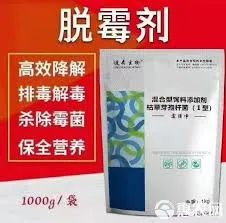
آگوست . 14, 2024 04:12 Back to list
Understanding the Production Processes and Innovations in 5th Generation Cephalosporins Manufacturing
The Emerging Landscape of 5th Generation Cephalosporins A Focus on Manufacturing
In recent years, the pharmaceutical industry has witnessed significant advancements in antibiotic development, particularly with the emergence of fifth-generation cephalosporins. These advanced beta-lactam antibiotics are designed to combat a broader spectrum of bacterial infections, particularly those caused by resistant strains. Understanding the manufacturing processes involved in producing these crucial medications is vital for addressing global public health challenges related to antibiotic resistance.
Cephalosporins are classified into generations based on their spectrum of activity and resistance to beta-lactamase enzymes. While earlier generations effectively treated many bacterial infections, the rise of resistant strains necessitated the development of newer antibiotics. Fifth-generation cephalosporins, such as ceftaroline and ceftobiprole, were engineered to provide improved efficacy against resistant Gram-positive bacteria, including methicillin-resistant Staphylococcus aureus (MRSA) and certain Gram-negative organisms.
The manufacturing of fifth-generation cephalosporins involves complex chemical processes that require a sophisticated understanding of organic chemistry. The production often begins with the fermentation of specific bacterial strains that can produce cephalosporin C, the precursor for synthetic modifications. This fermentation process must be carefully monitored and controlled to ensure optimal yield and quality.
Following fermentation, the cephalosporin derivatives undergo a series of chemical modifications. These processes may include acylation, hydroxylation, and a variety of other reactions designed to enhance the antibiotic's pharmacological properties. Automation and advanced technologies play a crucial role in these steps. Modern manufacturing facilities often employ continuous manufacturing techniques, which can increase efficiency and reduce waste compared to traditional batch processes.
5th generation cephalosporins factory

Quality control is an essential component of the manufacturing process for fifth-generation cephalosporins. Due to the critical role these antibiotics play in treating infections, stringent regulations must be followed to ensure purity, potency, and safety. Manufacturers often conduct rigorous testing, including high-performance liquid chromatography (HPLC) and mass spectrometry, to confirm that the final product meets the required specifications. Additionally, compliance with Good Manufacturing Practices (GMP) is mandatory, ensuring that the production facilities adhere to international standards.
The global demand for fifth-generation cephalosporins continues to rise, driven by increasing antibiotic resistance and the need for effective treatments. Manufacturers are challenged to scale up production while maintaining quality and controlling costs. This necessitates innovative approaches to process optimization and supply chain management.
Moreover, the competitive landscape of the pharmaceutical market means that companies must invest in research and development (R&D) to stay ahead. Many manufacturers are focusing on the development of novel cephalosporin derivatives that not only tackle existing resistant strains but also have fewer side effects and better pharmacokinetic properties. Collaborations between academia and industry are becoming increasingly important, fostering the exchange of knowledge and technology to accelerate the development process.
In conclusion, the manufacturing of fifth-generation cephalosporins is a complex and evolving field that plays a crucial role in the fight against antibiotic resistance. As global health challenges continue to mount, the importance of robust and innovative manufacturing processes cannot be overstated. By investing in advanced technologies, maintaining high-quality standards, and fostering collaboration, the pharmaceutical industry can ensure a steady supply of these vital antibiotics, ultimately improving patient outcomes and public health across the globe.
-
Sulfamono Methoxine Supplier High-Quality Veterinary Antibiotic
NewsMay.18,2025
-
Premium Staphylococcus Products Trusted Manufacturer & Supplier
NewsMay.18,2025
-
Premium Lincomycin HCl API Manufacturers Trusted Supplier & Factory
NewsMay.17,2025
-
Mad Cow Disease Test Kits Reliable BSE Detection Solutions
NewsMay.17,2025
-
Best Anti-Inflammatory for Cattle Trusted Manufacturer & Supplier
NewsMay.17,2025
-
Confusion Solutions Reliable Factory, Manufacturer & Supplier
NewsMay.16,2025




